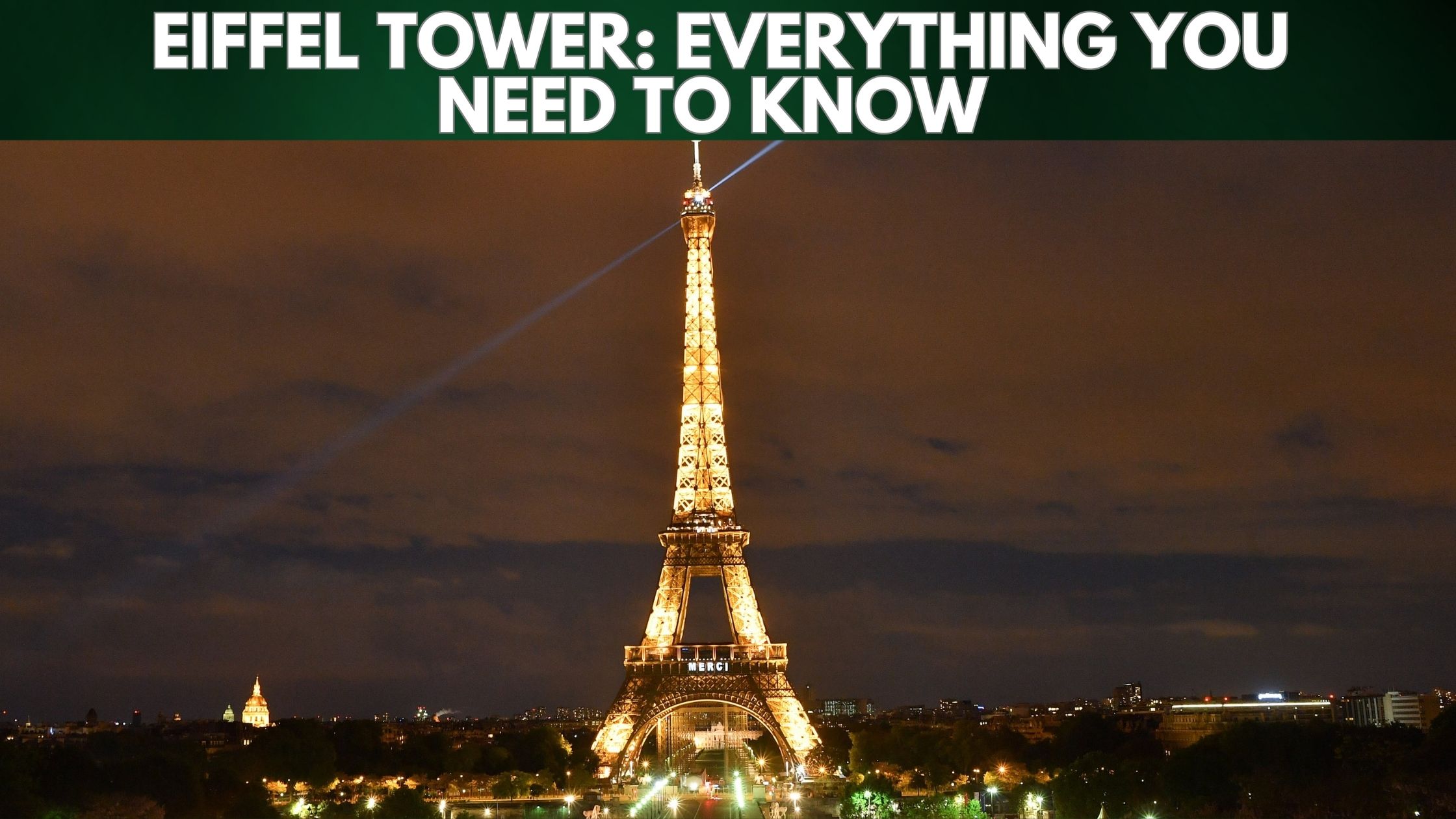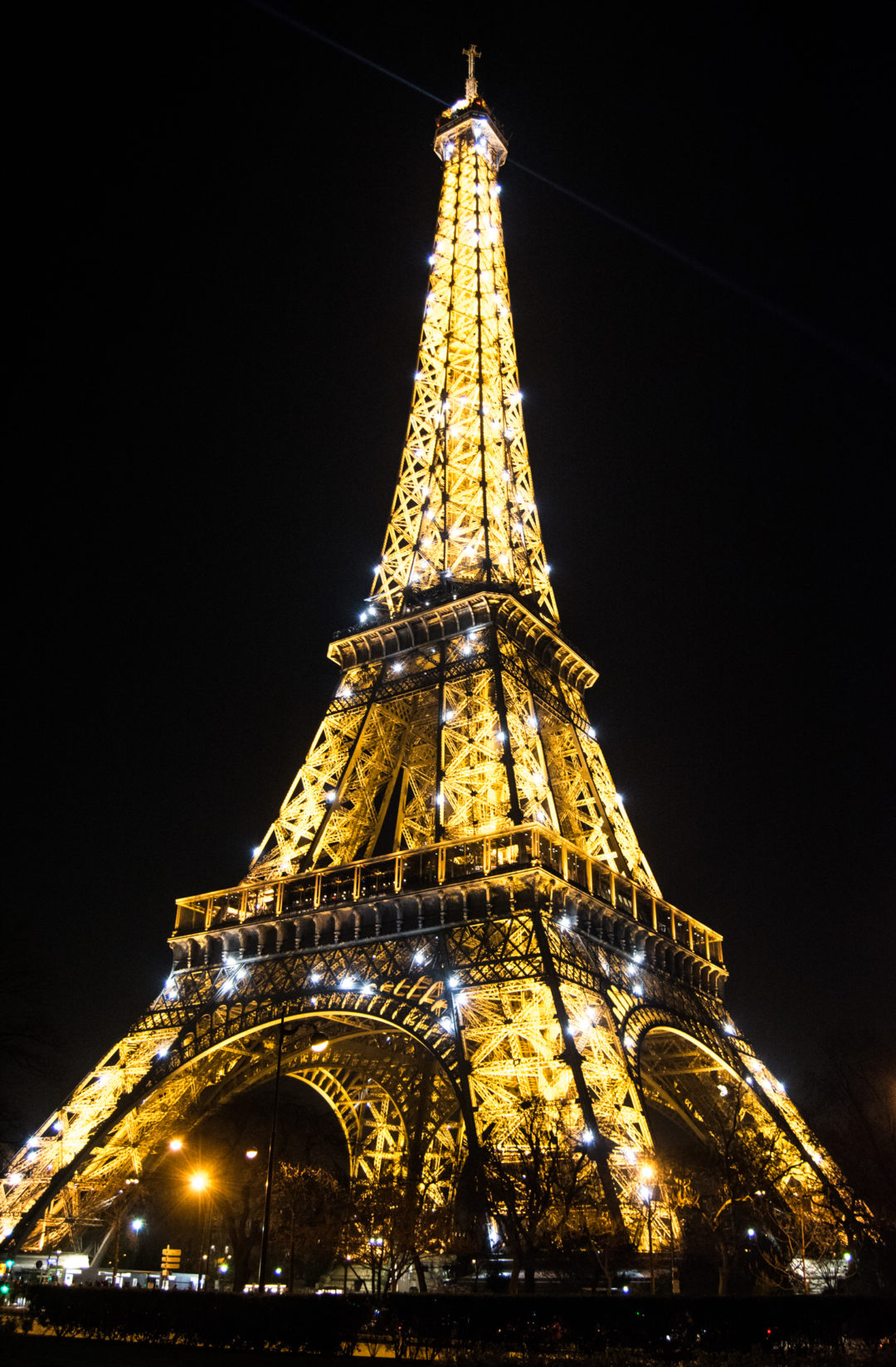Guides
Everything You Need To Know About Eiffel Tower
The Eiffel Tower, also known as la Tour Eiffel, is widely renowned as one of the most famous landmarks worldwide.

The Eiffel Tower, situated in Paris, France, is a well-known symbol that has captivated millions. This impressive landmark holds numerous fascinating and lesser-known details that contribute to its charm.
The Eiffel Tower, also known as la Tour Eiffel, is widely renowned as one of the most famous landmarks worldwide. It represents the charm and innovation of the City of Light.
In this article, RNN will uncover some of the intriguing secrets and interesting facts about this magnificent tower.
EVERYTHING YOU NEED TO KNOW ABOUT EIFFEL TOWER
1. Construction and Design:
The Eiffel Tower was designed by Gustave Eiffel and his team of engineers for the 1889 Exposition Universelle (World’s Fair). It took just over two years to build, with construction beginning in 1887 and completed in 1889. The tower stands at a height of 330 meters (1,083 feet) and was the tallest man made structure until the completion of the Chrysler Building in New York City in 1930.
2. Temporary Intentions:
Originally, the Eiffel Tower was intended to be a temporary structure, built as an entrance arch for the World’s Fair. However, due to its immense popularity and potential use in scientific experiments, it was allowed to remain standing even after the fair ended.
3. Painting the Tower:
The Eiffel Tower requires a fresh coat of paint every seven years to protect it from corrosion. A dedicated team of painters applies approximately 60 tons of paint to cover the entire surface of the tower. Interestingly, the tower is painted in three different shades, with lighter colors at the top and darker colors at the bottom to create an illusion of uniformity when viewed from the ground.
Before 1968, the tower was yellow-brown and chestnut-brown. In 1968, they started using the current color called “Eiffel Tower Brown.” Every seven years, painters add 60 tons of paint to keep the tower looking fresh. The tower is painted in three shades, getting lighter as it goes up, to make its shape stand out against the Parisian sky.
4. Wind and Weather:
The Eiffel Tower is designed to withstand various weather conditions, including strong winds. Its structure can sway up to 9 centimeters (3.5 inches) in strong winds, ensuring stability and safety for visitors. During cold weather, the tower can shrink by up to 15 centimeters (5.9 inches) due to the contraction of iron.
5. Illumination:
At night, the Eiffel Tower puts on a dazzling light show. The tower is adorned with thousands of sparkling lights, which are lit up every hour after sunset. This breathtaking spectacle lasts for five minutes and creates a mesmerizing sight for both locals and tourists.
6. Hidden Apartment:
Gustave Eiffel had a secret apartment at the top of the tower. Although it was originally used for entertaining guests, it is now open to the public and preserved as a museum. Visitors can explore the cozy living space and enjoy the spectacular view from this unique vantage point.
If you have the courage to climb the stairs to the tower’s peak, treat yourself to a glass of Champagne at the Champagne Bar. Enjoy the unique experience of sipping bubbly while taking in the breathtaking view. Additionally, you’ll find several dining options, including restaurants and eateries, along with a children’s play area, souvenir shops, museum exhibits, Gustave Eiffel’s office, and an observation deck that provides stunning panoramic views of Paris.
7. Historical Significance:
Over the years, the Eiffel Tower has played a significant role in various historical events. It served as a military radio transmission post during World War I, aiding in communication efforts. Additionally, it has been a symbol of resistance during times of occupation and has witnessed numerous important gatherings and celebrations.
Radio saved the Eiffel Tower from destruction
Eiffel paid for most of the tower’s construction, so he was allowed to keep it for 20 years to recover his money before the Parisian government planned to take it apart for scrap metal. Eiffel tried to save the tower by showing its usefulness, so he put an antenna on top and funded experiments with wireless telegraphy in 1898. The tower proved valuable for sending and receiving wireless messages, especially for the French military, so the city extended Eiffel’s permission to keep it when it expired in 1909. Today, over 100 antennas on the tower broadcast radio and TV signals worldwide.
8. Visitor Numbers:
The Eiffel Tower attracts an astounding number of visitors each year. It is estimated that over 7 million people ascend the tower annually, making it one of the most visited paid monuments in the world. Visitors can take elevators or climb the stairs to reach the different levels and enjoy breathtaking panoramic views of Paris.
9. Scientific Laboratory
The tower housed a scientific laboratory. Eiffel, a passionate scientist, engraved the names of 72 French scientists on the first-level gallery of the Eiffel Tower. He also built a laboratory on top of the tower where he and other French scientists conducted studies in astronomy, meteorology, aerodynamics, and physiology. They used the laboratory to carry out various experiments, including the famous Foucault’s Pendulum. In 1909, Eiffel added an aerodynamic wind tunnel at the tower’s base, which facilitated numerous tests, including those involving the airplanes of the Wright Brothers and the automobiles of Porsche. Eiffel generously allowed other scientists to utilize the laboratory for their own experiments.

Here are some more fascinating facts about the Eiffel Tower:
- The Eiffel Tower weighs 10,000 tons.
- There are 5 billion lights on the Eiffel Tower.
- The French have a nickname for the tower: La Dame de Fer, “the Iron Lady.”
- The first platform is 190 feet above the ground; the second platform is 376 feet, and the third platform is almost 900 feet up.
- The Eiffel Tower has 108 stories, with 1,710 steps. However, visitors can only climb stairs to the first platform.
- There are two elevators.
One elevator travels a total distance of 64,001 miles (103,000 kilometers) a year.
Uses Of The Tower
The tower was initially meant to be temporary and removed after 20 years. However, over time, people changed their minds and didn’t want it to be taken down.
After the World Exhibition, many critics of the tower apologized and praised its success. Despite some individuals, like novelist Guy de Maupassant, still disliking it.
Gustave Eiffel, the creator of the tower, didn’t want it dismantled either. He made efforts to make the tower valuable to the scientific community. He installed a meteorology laboratory on the third floor, inviting scientists to conduct studies there.
The tower’s height, rather than its laboratory, ultimately saved it. In 1910, the city of Paris renewed Eiffel’s concession for the tower due to its usefulness as a wireless telegraph transmitter. During World War I, the French military utilized the tower to communicate with ships and intercept enemy messages.
Even today, the tower remains significant, housing over 120 antennas that broadcast radio and television signals across the city and beyond.
WHAT IS INSIDE EFFIEL TOWER?
On the first level, there are various amenities to enhance the visitor experience. One can find restaurants, cafes, and souvenir shops where tourists can take a break, grab a bite to eat, or purchase mementos to remember their visit. The first level also features an exhibition area that showcases the history and construction of the tower, providing visitors with interesting insights.
Moving up to the second level, visitors are treated to even more awe-inspiring panoramas. From this vantage point, one can admire the city’s landmarks, such as the Arc de Triomphe, the Louvre Museum, and the Seine River. Additionally, the second level houses a glass floor section, offering a thrilling experience of standing above the ground and seeing the world beneath your feet.
Finally, at the topmost level of the Eiffel Tower, there is a viewing platform that provides an unparalleled view of Paris. Here, visitors can gaze at the sprawling cityscape, spotting famous landmarks from a unique perspective. On a clear day, one can see as far as 72 kilometers (45 miles) in every direction, marveling at the beauty of the city and its surroundings.
CONCLUSION
The Eiffel Tower stands as a testament to human ingenuity and architectural marvel. Its rich history, remarkable design, and hidden secrets continue to captivate the imaginations of people from all walks of life. Whether you’re planning a trip to Paris or simply marveling at its beauty from afar, the Eiffel Tower remains an enduring symbol of human achievement and an emblematic landmark of France.
